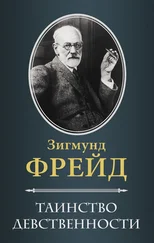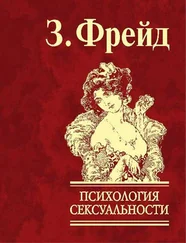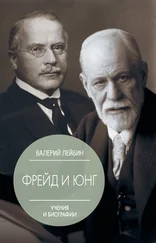Зигмунд Фрейд - Totem and Taboo
Здесь есть возможность читать онлайн «Зигмунд Фрейд - Totem and Taboo» весь текст электронной книги совершенно бесплатно (целиком полную версию без сокращений). В некоторых случаях можно слушать аудио, скачать через торрент в формате fb2 и присутствует краткое содержание. Год выпуска: 2014, Издательство: epubBooks Classics, Жанр: Психология, на английском языке. Описание произведения, (предисловие) а так же отзывы посетителей доступны на портале библиотеки ЛибКат.
- Название:Totem and Taboo
- Автор:
- Издательство:epubBooks Classics
- Жанр:
- Год:2014
- ISBN:нет данных
- Рейтинг книги:3 / 5. Голосов: 1
-
Избранное:Добавить в избранное
- Отзывы:
-
Ваша оценка:
- 60
- 1
- 2
- 3
- 4
- 5
Totem and Taboo: краткое содержание, описание и аннотация
Предлагаем к чтению аннотацию, описание, краткое содержание или предисловие (зависит от того, что написал сам автор книги «Totem and Taboo»). Если вы не нашли необходимую информацию о книге — напишите в комментариях, мы постараемся отыскать её.
Totem and Taboo — читать онлайн бесплатно полную книгу (весь текст) целиком
Ниже представлен текст книги, разбитый по страницам. Система сохранения места последней прочитанной страницы, позволяет с удобством читать онлайн бесплатно книгу «Totem and Taboo», без необходимости каждый раз заново искать на чём Вы остановились. Поставьте закладку, и сможете в любой момент перейти на страницу, на которой закончили чтение.
Интервал:
Закладка:
Two facts have become decisive for the last of the psychological theories as stated by Wundt; in the first place, that the original and most widely known totem object was an animal, and secondly, that the earliest totem animals corresponded to animals which had a soul [171] Wundt, Elemente der Völker–Psychologie , p. 190.
. Such animals as birds, snakes, lizards, mice are fitted by their extreme mobility, their flight through the air, and by other characteristics which arouse surprise and fear, to become the bearers of souls which leave their bodies. The totem animal is a descendant of the animal transformations of the spirit–soul. Thus with Wundt totemism is directly connected with the belief in souls or with animism.
(b) and (c) THE ORIGIN OF EXOGAMY AND ITS RELATION TO TOTEMISM
I have put forth the theories of totemism with considerable detail and yet I am afraid that I have not made them clear enough on account of the condensation that was constantly necessary. In the interest of the reader I am taking the liberty of further condensing the other questions that arise. The discussions about the exogamy of totem races become especially complicated and untractable, one might even say confused, on account of the nature of the material used. Fortunately the object of this treatise permits me to limit myself to pointing out several guide–posts and referring to the frequently quoted writings of experts in the field for a more thorough pursuit of the subject.
The attitude of an author to the problems of exogamy is of course not independent of the stand he has taken toward one or the other of the totem theories. Some of these explanations of totemism lack all connexion with exogamy so that the two institutions are entirely separated. Thus we find here two opposing views, one of which clings to the original likelihood that exogamy is an essential part of the totemic system while the other disputes such a connection and believes in an accidental combination of these two traits of the most ancient cultures. In his later works Frazer has emphatically stood for this latter point of view.
“I must request the reader to bear constantly in mind that the two institutions of totemism and exogamy are fundamentally distinct in origin and nature though they have accidentally crossed and blended in many tribes.” ( Totemism and Exogamy I, Preface XII.)
He warns directly against the opposite view as being a source of endless difficulties and misunderstandings. In contrast to this, many authors have found a way of conceiving exogamy as a necessary consequence of the basic views on totemism. Durkheim [172] L’année Sociologique , 1898–1904.
has shown in his writings how the taboo, which is attached to the totem, must have entailed the prohibition against putting a woman of the same totem to sexual uses. The totem is of the same blood as the human being and for this reason the blood bann (in reference to defloration and menstruation) forbids sexual intercourse with a woman of the same totem [173] See Frazer’s Criticism of Durkheim, Totemism and Exogamy , p. 101.
. Andrew Lang, who here agrees with Durkheim, goes so far as to believe that the blood taboo was not necessary to bring about the prohibition in regard to the women of the same tribe [174] Secret , etc., p. 125.
. The general totem taboo which, for instance, forbids any one to sit in the shadow of the totem tree, would have sufficed. Andrew Lang also contends for another derivation of exogamy (see below) and leaves it in doubt how these two explanations are related to each other.
As regards the temporal relations, the majority of authors subscribe to the opinion that totemism is the older institution and that exogamy came later [175] See Frazer, l.c. , Vol. IV, p. 75: “The totemic clan is a totally different social organism from the exogamous class, and we have good grounds for thinking that it is far older.”
.
Among the theories which seek to explain exogamy independently of totemism only a few need be mentioned in so far as they illustrate different attitudes of the authors towards the problem of incest.
MacLennan [176] Primitive Marriage , 1865.
had ingeniously guessed that exogamy resulted from the remnants of customs pointing to earlier forms of female rape. He assumed that it was the general custom in ancient times to procure women from strange tribes so that marriage with a woman from the same tribe gradually became “improper because it was unusual”. He sought the motive for the exogamous habit in the scarcity of women among these tribes, which had resulted from the custom of killing most female children at birth. We are not concerned here with investigation whether actual conditions corroborate MacLennan’s assumptions. We are more interested in the argument that these premises still leave it unexplained why the male members of the tribe should have made these few women of their blood inaccessible to themselves, as well as in the manner in which the incest problem is here entirely neglected [177] Frazer, l.c. , p. 73 to 92.
.
Other writers have on the contrary assumed, and evidently with more right, that exogamy is to be interpreted as an institution for the prevention of incest [178] Compare Chapter I.
.
If we survey the gradually increasing complication of Australian marriage restrictions we can hardly help agreeing with the opinion of Morgan Frazer, Hewitt and Baldwin Spencer [179] Morgan, Ancient Society , 1877.—Frazer, Totemism and Exogamy , Vol. IV, p. 105.
, that these institutions bear the stamp of ‘deliberate design’, as Frazer puts it, and that they were meant to do what they have actually accomplished. “In no other way does it seem possible to explain in all its details a system at once so complex and so regular” [180] Frazer, l.c. , p. 106.
.
It is of interest to point out that the first restrictions which the introduction of marriage classes brought about affected the sexual freedom of the younger generation, in other words, incest between brothers and sisters and between sons and mothers, while incest between father and daughter was only abrogated by more sweeping measures.
However, to trace back exogamous sexual restrictions to legal intentions does not add anything to the understanding of the motive which created these institutions. From what source, in the final analysis, springs the dread of incest which must be recognized as the root of exogamy? It evidently does not suffice to appeal to an instinctive aversion against sexual intercourse with blood relatives, that is to say, to the fact of incest dread, in order to explain the dread of incest, if social experience shows that, in spite of this instinct, incest is not a rare occurrence even in our society, and if the experience of history can acquaint us with cases in which incestuous marriage of privileged persons was made the rule.
Westermarck [181] Origin and Development of Moral Conceptions , Vol. II: Marriage (1909). See also there the author’s defence against familiar objections.
advanced the following to explain the dread of incest: “that an innate aversion against sexual intercourse exists between persons who live together from childhood and that this feeling, since such persons are as a rule consanguineous, finds a natural expression in custom and law through the abhorrence of sexual intercourse between those closely related.” Though Havelock Ellis disputed the instinctive character of this aversion in the Studies in the Psychology of Sex , he otherwise supported the same explanation in its essentials by declaring: “The normal absence of the manifestation of the pairing instinct where brothers and sisters or boys and girls living together from childhood are concerned, is a purely negative phenomenon due to the fact that under these circumstances the antecedent conditions for arousing the mating instinct must be entirely lacking…. For persons who have grown up together from childhood habit has dulled the sensual attraction of seeing, hearing and touching and has led it into a channel of quiet attachment, robbing it of its power to call forth the necessary erethistic excitement required to produce sexual tumescence.”
Интервал:
Закладка:
Похожие книги на «Totem and Taboo»
Представляем Вашему вниманию похожие книги на «Totem and Taboo» списком для выбора. Мы отобрали схожую по названию и смыслу литературу в надежде предоставить читателям больше вариантов отыскать новые, интересные, ещё непрочитанные произведения.
Обсуждение, отзывы о книге «Totem and Taboo» и просто собственные мнения читателей. Оставьте ваши комментарии, напишите, что Вы думаете о произведении, его смысле или главных героях. Укажите что конкретно понравилось, а что нет, и почему Вы так считаете.






